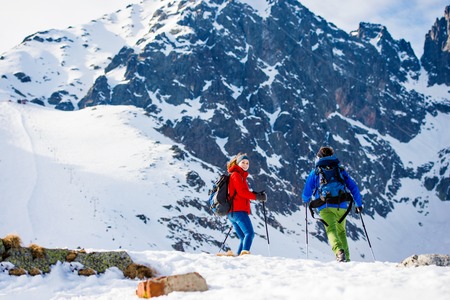Understanding the Indian Monsoon and Its Challenges
The Indian monsoon is not just a season—it is a phenomenon that breathes new life into the land while simultaneously transforming every aspect of outdoor adventure. For trekkers, this means embracing both the gifts and the challenges that the rains bring. From June to September, heavy downpours sweep across diverse regions, from the lush Western Ghats to the rolling hills of Uttarakhand and Himachal Pradesh. The weather can shift rapidly; clear skies may give way to thunderous showers in moments, making it vital for trekkers to plan with flexibility and respect for nature’s unpredictability.
Monsoon trekking in India comes with its own set of unique concerns. The trails become slippery and often shrouded in mist, with loose rocks and sudden landslides turning familiar paths into unfamiliar terrain. Rivers swell quickly, creating water crossings that are both exciting and risky. Humidity levels rise, affecting energy levels and increasing the risk of dehydration despite constant rain. Meanwhile, leeches and insects thrive in these wet conditions, demanding extra care when selecting campsites or resting spots.
Preparing for a trek during this time isn’t just about packing an umbrella or raincoat. It’s about understanding how food can spoil faster in humid air, how clean drinking water becomes harder to find as streams turn muddy, and how safety precautions must be heightened. The monsoon shapes not only the physical landscape but also the rhythm of your journey—urging you to move slower, to listen more closely to the whispers of the forest, and to connect deeply with the land beneath your feet. As you begin planning how to arrange food and water for your trek, recognising these monsoon-specific challenges will empower you to journey safely and joyfully through India’s enchanting rainy season.
Local Food Choices for Sustained Energy
When planning your monsoon trekking adventure in India, selecting the right food is essential for keeping your energy steady and spirits high. The Indian subcontinent offers a wealth of regional staples and beloved snacks that not only honour tradition but also provide the nutrition needed to power through rain-soaked trails. Exploring local flavours means more than just satisfying hunger; it’s about connecting with the land and communities you walk through.
Regional Staples That Fuel Your Journey
The heartiness of Indian cuisine shines brightest in challenging weather. Rice, rotis (flatbreads), and lentils are found across most trekking routes—each region adding its unique touch. In Himachal Pradesh or Uttarakhand, simple dal-chawal (lentil curry with rice) or parathas stuffed with potatoes offer warmth and satiety. Down south, lemon rice or curd rice provides light yet sustaining options for humid treks. Maharashtra’s poha, made from flattened rice and peanuts, is another trekker favourite, quick to prepare and easy on the stomach.
Common Local Foods for Monsoon Trekking
| Region | Staple Dish | Key Benefits |
|---|---|---|
| Himalayan North | Dal-Chawal, Paratha | High in protein & carbs; comforting in cold weather |
| Western Ghats | Poha, Thepla | Lightweight, energy-rich, easy to carry |
| South India | Lemon Rice, Curd Rice | Cools the body, easily digestible during humidity |
| Northeast India | Bamboo Shoot Curry with Rice | Packed with fibre & minerals, local flavour experience |
Trekker-Approved Snacks: Tradition Meets Nutrition
Sustaining energy between meals is crucial on long monsoon hikes. Indian trekkers often swear by a mix of traditional snacks and modern trail foods. Roasted chana (chickpeas), murmura (puffed rice), peanuts mixed with jaggery (gur), and tilgul (sesame-jaggery sweets) are not just healthy—they’re easy to pack and resistant to spoilage in damp conditions. Some prefer khakhra (crispy whole wheat crackers) or laddus made from millets for a slow release of energy.
A Balanced Approach for Rainy Trails
The key to monsoon trekking nutrition is balance—combining complex carbohydrates from grains with proteins from lentils or pulses, topped off with natural sugars and healthy fats found in nuts and seeds. By blending regional food wisdom with modern nutritional knowledge, you ensure that every meal along the misty trails fuels both body and soul.

3. Hydration Essentials and Safe Drinking Practices
Monsoon trekking in India brings with it lush greenery, misty trails, and also the challenge of staying hydrated amidst unpredictable weather. The importance of purified water cannot be overstated, especially as rainwater run-off often contaminates natural sources during this season. Always make it a rule—never compromise on water quality, no matter how inviting a mountain stream may look.
Traditional Indian Methods for Water Carrying
Before modern bottles and hydration packs became common, trekkers in India relied on practical, locally available solutions. Many still use matkas (earthen pots) at base camps for cool, naturally filtered water. For the trail, stainless steel or copper vessels are popular; both materials not only keep the water fresh but are believed in Ayurveda to offer additional health benefits. Old-timers sometimes carry lemon-salt mix or jaljeera powder, which can be quickly added to boiled or filtered water to replenish salts lost through sweat and give a refreshing zing.
Sourcing Water Responsibly on the Trail
If you must source water from streams or springs, always go upstream and avoid collecting near settlements or grazing grounds. Locals will tell you: “Flowing water is life.” But remember, monsoon floods can mix runoff into even fast-flowing streams. It is wise to carry a small steel vessel to boil water if needed—a practice deeply rooted in Indian trekking culture.
Modern Gear for Reliable Hydration
Today, trekkers have access to lightweight filtration systems like portable water filters and UV purifiers. Carry a reusable bottle—preferably insulated to keep liquids cool. Many Indian trekkers opt for collapsible silicone bottles due to their space-saving design, perfect for multi-day journeys. Electrolyte tablets or local alternatives like ORS sachets (Oral Rehydration Salts) are easily found at chemists across India and should always be part of your kit during monsoon treks.
The monsoon’s magic lies in its unpredictability—embrace it, but respect the need for safe hydration. Drawing wisdom from both tradition and technology ensures every step you take remains energized and safe under the Indian rains.
4. Packing and Storing Food the Desi Way
Monsoon trekking in India is a soulful journey, but the humidity and unpredictable rains demand smart, mindful food storage. Our Indian heritage offers time-tested wisdom—packing food with eco-friendly materials and traditional techniques, ensuring freshness while respecting nature.
Eco-Friendly and Waterproof Storage Tips
Plastic may be convenient, but it doesnt align with our spirit of “Green Bharat.” Instead, opt for reusable stainless steel dabbas (tiffin boxes), glass jars, or cloth bags with a wax wrap. These keep your snacks dry and safe from sudden showers. For trekkers looking to go even greener, biodegradable pouches made from cornstarch or paper are now available in local markets.
Desi Methods: Banana Leaf Wrapping
Banana leaves have been used across India for centuries to store and serve food. Their natural waxy coating repels water, keeping rotis, poha, or idlis moist and fresh. Simply wash the leaf, lightly toast it over the flame to make it flexible, then wrap your food snugly. Secure with a string—no plastic needed.
Traditional Storage Options for Monsoon Trekking
| Storage Method | Best For | Benefits |
|---|---|---|
| Banana Leaf Wraps | Puris, Rice, Chutneys | Keeps food moist; compostable; waterproof |
| Stainless Steel Dabba | Semi-dry sabzi, Snacks | Reusable; airtight; prevents sogginess |
| Cotton Cloth Bags with Wax Wraps | Nuts, Dry Fruits, Biscuits | Lightweight; eco-friendly; protects from moisture |
| Cornstarch Biodegradable Bags | Packed meals on-the-go | Water-resistant; breaks down naturally |
Mindful Packing Rituals: A Local Touch
Before setting out, sprinkle a pinch of turmeric or rock salt in your storage containers—a simple desi hack that helps preserve freshness and ward off spoilage during humid treks. Remember to pack enough cloth napkins for wiping hands and wrapping leftovers for the journey back—respecting both the trails and our mother earth.
5. Sourcing Supplies from Local Markets
When preparing for monsoon trekking in India, the vibrant local bazaars are your best friends for sourcing food and water supplies. Indian markets are not just places to shop—they are living stories, bustling with the fragrance of spices, the chatter of vendors, and the rainbow hues of fresh produce. Here’s how you can make the most of these lively spaces while embracing the spirit of slow, mindful travel.
Choosing Fresh Produce Mindfully
Indian fruits and vegetables come alive during monsoon—think juicy mangoes, plump guavas, bananas, cucumbers, and hearty root vegetables. When selecting your trekking fuel, pick seasonal produce as it is fresher and more affordable. Don’t hesitate to ask local vendors for recommendations; their wisdom about what keeps best on long journeys is invaluable. Carry a reusable cloth bag (a “jhola”) as locals do, showing respect for both tradition and the environment.
Snacks That Travel Well
Bazaars offer an array of travel-friendly snacks: roasted chana (gram), murmura (puffed rice), sev, khakra, and local dry fruits like almonds and cashews. These snacks are not only energy-boosting but also reflect the rich flavors of India. Ask vendors for “namkeen” that is less oily or specially made for travellers—many will have family recipes passed down through generations. This simple act connects you to their heritage and ensures you carry a taste of the land with you.
Connecting with Local Vendors
Building a rapport with bazaar vendors goes beyond transactions—it’s about trust and shared humanity. Greet them with a smile and a gentle “Namaste.” If you’re trekking in regions like Himachal or Uttarakhand, try learning a few words in the local dialect; it always brings a smile. Vendors may even suggest hidden gems or offer extra portions as blessings for your journey. Respect their time and craft by listening to their stories—it transforms shopping into soulful exchange.
Water Arrangements from Bazaars
In many towns, filtered drinking water is available in sealed bottles or refill stations within marketplaces. Always check seals before purchase, or ask trusted stalls where you can refill your bottle safely. In some regions, look out for “matka” (earthen pots) offering cool water—a tradition that reflects India’s heartwarming hospitality.
Sourcing your trekking essentials from Indian bazaars isn’t just practical—it deepens your connection to place and people, making every step of your journey nourished by local spirit and kindness.
6. Respecting Nature and Minimising Waste
As we prepare food and water for monsoon trekking in India, it is crucial to walk in harmony with ‘prakriti’ – the natural world that sustains us. Indian philosophies teach us to see the earth as a living mother, encouraging deep respect for every tree, stream, and creature along our path. Trekking during the monsoon is not only an adventure but also an opportunity for mindful connection with nature.
Carrying Forward the Ethos of Responsible Tourism
Responsible tourism means leaving no trace behind. Choose reusable containers for food and water instead of single-use plastics. When packing snacks like poha or parathas, use banana leaves or cloth wraps, which are both eco-friendly and rooted in Indian tradition. Collect all waste in a designated bag and bring it back to the nearest disposal point. Remember, local communities depend on these hills and rivers — let us honour their home as we would our own.
Water Wisdom: Conserve and Replenish with Care
When sourcing water from mountain streams, filter and purify with portable filters or traditional alum stones (‘fitkari’) where possible. Avoid contaminating water sources by washing utensils or bathing away from streams. This small act preserves purity for fellow trekkers, villagers, and wildlife alike.
A Mindful Trekker’s Pledge
Let every meal shared under rain-soaked skies be a prayer of gratitude to prakriti. Share surplus food with fellow trekkers instead of wasting it, compost biodegradable scraps if feasible, and educate others about sustainable practices. By walking gently, minimising waste, and nurturing the environment, we uphold the spirit of India’s ancient wisdom — treading lightly so that future generations may find joy in these green monsoon trails.


